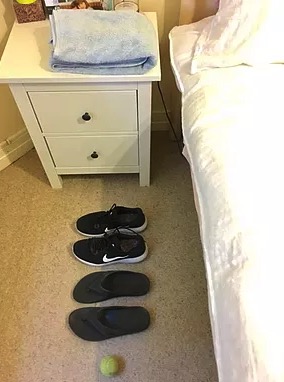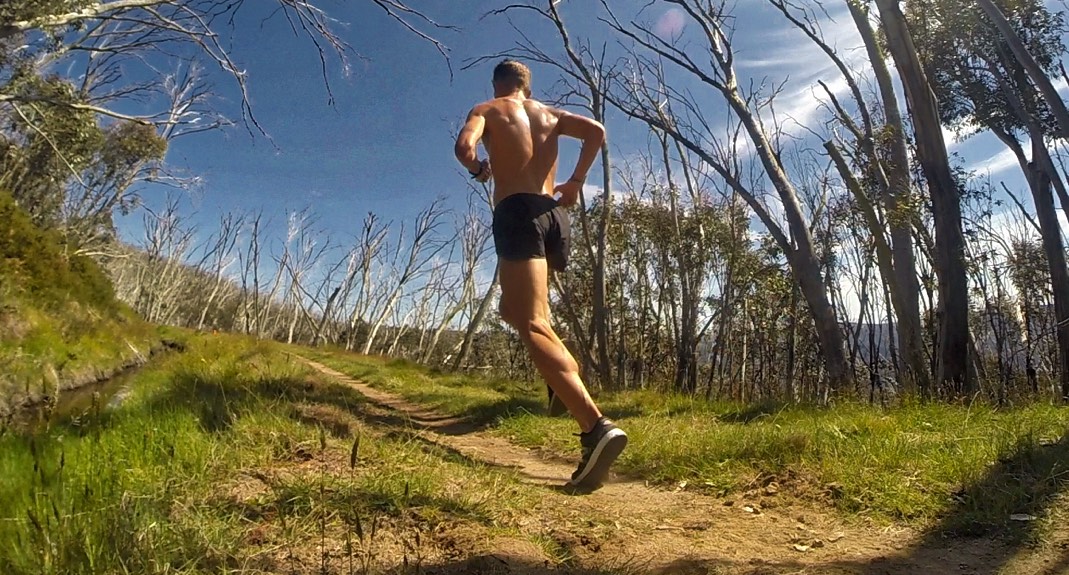The 5 Minute Morning Protocol for Heel Pain – Plantar Fasciitis
Almost without exception, everyone I see with heel pain due to plantar fasciitis will have ‘first step’ pain when getting up in the morning or when getting up after being seated for a while. Often the pain is so unbearable at heel contact it leads to an altered gait pattern such as forefoot walking or walking on the outside of the foot for a few minutes until it ‘warms up’. This is not a good long-term strategy to avoid pain! I have a lot of plantar fasciitis sufferers come and see me for treatment after they’ve started to develop a new pain in their foot from limping to avoid the original pain! So, it’s important to eliminate ‘first step’ heel pain altogether as soon as possible.
As part of the management of Plantar Fasciitis, I recommend a quick 5-minute morning routine as described below – Roll, Stretch and Support before taking that first step:

-
A tennis ball or small massage ball.
-
A towel
-
Running shoes or orthotic/support thongs
Roll – once you wake, sit on the edge of the bed, place the arch of your injured foot on the ball and start rolling.
-
DON’T roll over the painful heel area.
-
Roll from just in front of the heel to just behind the forefoot. Focus your rolling over any tight areas. Most people describe it as a ‘good pain’ when releasing a tight or overworked muscle in the arch of the foot.
-
Roll for 3 minutes, start lightly and apply firmer pressure as you go.
-
The aim is to loosen the mid-portion of the fascia and ‘wake up’ the intrinsic muscles in the sole of the foot that help stabilise the arch when weight bearing.
Stretch – hold one end of the towel in each hand and loop the towel over the forefoot and toes.
-
Pull back until you feel a light stretch in the calf and/or sole of the foot – hold for 3×30 seconds. Have a 10-second break between stretches or do alternate legs.
-
This should NOT be painful to perform. If painful, ease back on the stretch or just don’t do the stretch till its pain-free to do so.
-
Don’t use an elasticated band like thera-band to do this stretch, you need something non-stretchy so you can get a good stretch.
Support – Slip on a comfy pair of runners or thongs – something that will ‘stress-shield’ the plantar fascia when you take those first steps. Options below:
-
Well cushioned running shoe
-
Arch support thong/slide/sandal – these should cushion and support the arch and can tend to ‘un-weight’ the painful heel by redistributing some weight into the midfoot. I like Oofos, Orthaheel, Archies and Crocs for this purpose.
Other tips:
- Massage is extremely helpful for treating Plantar Fasciitis and should continually implement into your daily routine. The benefits far outweigh the time spent delivering the massage.
-
If you have a desk job, have another ball under your desk and ready to roll. Just a few minutes of rolling before you get up from your desk will help minimise that pain that can occur once standing after being seated for a while.
-
Try some acupressure! When rolling, if you find a particularly sore or tight spot then stop rolling and apply firm and sustained pressure by pushing your foot into the ball for 30 seconds. You’ll find that even with the same pressure, the discomfort will slowly dissipate towards the end of the 30 seconds as the muscle relaxes under the ball.
-
The benefit of an orthotic thong is its ease of use, especially if getting up for the loo in the night. That’s right, no barefoot even to the toilet, slip your thongs on. This is especially important for any hard surfaces around home like floorboards or tiles.
In summary:
I used the term plantar fasciitis in the title and throughout as it’s the term most commonly referred to (and googled) when someone has any plantar fascial injury. Sometimes you may hear the term plantar fasciosis or plantar calcaneal enthesopathy, which for a lot of sufferers, are more accurate terms to describe the condition that involves ‘first step’ pain.
The morning protocol for heel pain can work wonders, but it’s still a generic program that may need to be tweaked slightly depending on the stage and extent of injury. It also may need to be modified in the rare case someone has excessive calf mobility. For this small sub group of plantar fasciitis sufferers they may actually benefit from calf strengthening rather than stretching! Unsure if you’re restricted or excessively mobile? See a health professional that can assess you and provide more individual guidance!
It’s important to remember that the morning protocol is just one part of the overall management of plantar fasciitis.
Good luck!
Email me at info@walkerstreetsportspodiatry.com.au if you have any questions!
END
Thomas Do Canto is an awesome runner (1st at the 2016 Sixfoot Track Marathon and Melbourne marathon), and one of Sydney’s leading podiatrists. You can find him at
Suite 2, Ground Level
83 Walker Street
North Sydney, NSW 2060

















Comments are closed.